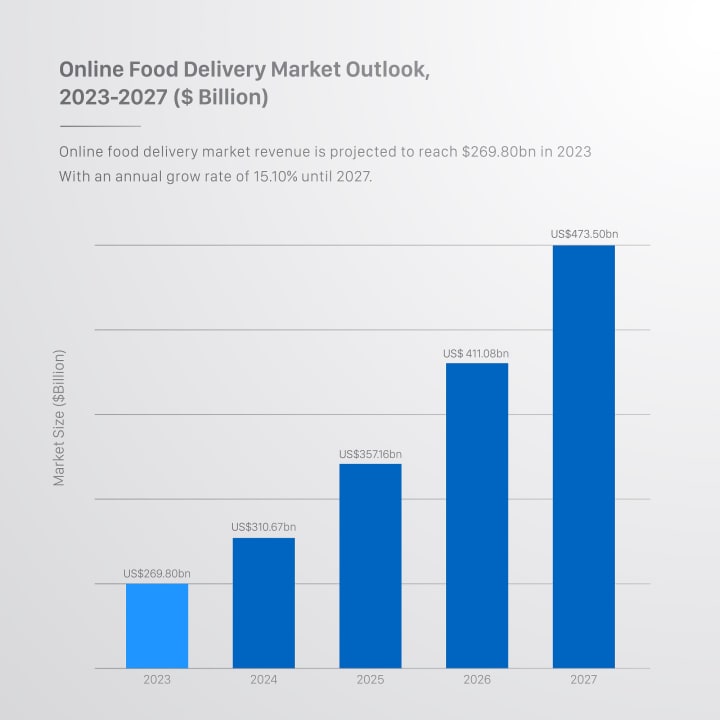The future of dining: Online food ordering system and delivery
The role of technology

Many local restaurant owners are struggling to increase sales in light of the 2021 closures and the current labor shortage. Restaurant owners can streamline their operations and meet the growing demand for contactless ordering by implementing an online food ordering system. This article will show you how to incorporate an online food ordering system as well as the best delivery services into your business plan. You can help your business succeed in the face of these challenges by doing so.
Why should you think about having a local delivery service and an online food ordering system for your restaurant?
A more efficient business model involves faster processes, increased profit margins, and staff reduction for cost savings.
iPos enables businesses to serve customers at a clean table with disinfected plates and cutlery, take orders online, display them in the kitchen, and deliver them through a local meal delivery service at no cost. This allows for a more efficient and convenient online ordering experience.
An online food ordering system expands your audience, as customers prefer eating without a table. Since 2014, online orders and deliveries have grown 300% faster than dining in a restaurant. Offering digital options can capitalize on this trend and increase sales.
The global online grocery market is expected to grow significantly, reaching $269.80 million by 2023, with a 15.10% CAGR until 2027. Prepared meal delivery services are expected to reach $19.64 billion by 2026.

So, how can you adopt an online food ordering system and local delivery service for your restaurant?
Restaurants can transition to e-commerce by offering online food ordering and gift cards. This allows customers to browse menus and select items quickly. Additionally, offering online gift cards can enhance the restaurant's online presence.
Online food delivery is enabling personalization of menu items, utilizing data from delivery platforms to cater to customers' lifestyles and food allergies, improving customer experience and fostering stronger connections.
What do you need for your restaurant’s online ordering store?
- A website platform and host: WordPress and Shopify are good options for your website's platform and host. Many of these website builders will include templates to aid in restaurant web design ideas. You'll also need a website host, such as GoDaddy or Bluehost, to get your online presence up and running.
- A system for online ordering and/or delivery: The most important addition to your restaurant's website will most likely be online orders.
The problem with delivery
Restaurants face economic challenges with delivery costs, as external providers charge fees up to 30%. This can negatively impact profits, leading to higher menu prices. Some restaurants opt for hiring drivers or partnering with delivery companies, depending on the ordering system and service option.
The three most common delivery models:
- First-Party Delivery with Own Drivers. This model is mainly used in pizza places. The delivery fee should cover all expenses associated with bringing products from the establishment to the customer. The main expenses would be: paying employees and drivers; and costs of fuel, maintenance, and car insurance, among others. To ensure that you cover all of these costs, your shipping fee should be higher than the average cost of shipping per order.
- First-Party Ordering with On-Demand delivery. Restaurants can have access to a network of drivers from a delivery company for a fixed fee per order, instead of a commission based on a high percentage. Through this delivery model, restaurants can maintain control of valuable guest data and their brand. It’s the best delivery service for restaurants looking for a local meal delivery service option.
- Third-Party Delivery. Delivery apps like Doordash, Grubhub, and Ubereats charge restaurants commissions that can reach up to 30% for the delivery and marketing services they provide. The delivery apps maintain the delivery fees and define how to compensate their drivers.
Restaurants can enhance customer satisfaction and business growth by using a customizable online food ordering system with delivery services. iPos offers a cost-free delivery system, centralized within POS software, allowing restaurants to focus on expanding profits without generating losses.
About the Creator
Enjoyed the story? Support the Creator.
Subscribe for free to receive all their stories in your feed. You could also pledge your support or give them a one-off tip, letting them know you appreciate their work.





Comments
There are no comments for this story
Be the first to respond and start the conversation.